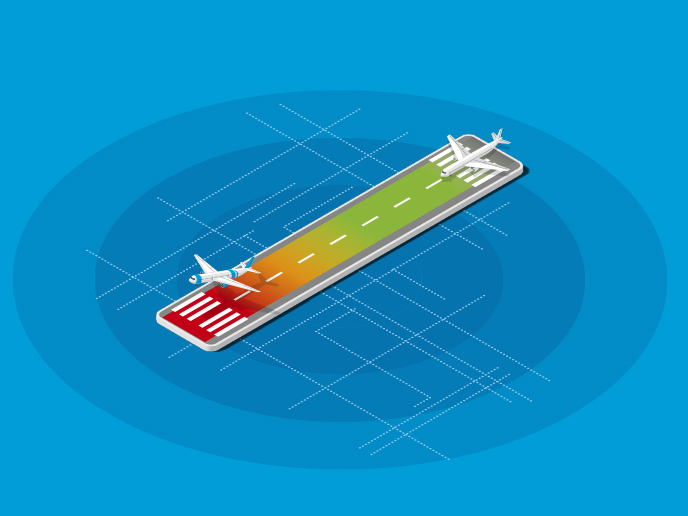I - Mitigating the impact of aviation on climate change – and vice versa
“AEROPLANE will help air traffic controllers visualise the climate impact of flight trajectories.”
Carlo Abate, AEROPLANE project coordinator
Aviation and climate are intricately linked. Emissions from air transport contribute to climate change, and in return the changing climate impacts air travel too. Extreme weather events such as heatwaves, blizzards, high winds and heavy precipitation can affect infrastructure and aircraft performance, causing delays and cancellations. “Traditionally, the concepts of mitigation – of the impact of aviation on climate – and adaptation – of aviation operations and infrastructure to make them more resilient to climate change – are investigated separately, but they are very much intertwined,” says Carlo Abate, head of environment & energy at Deep Blue in Italy, and AEROPLANE project coordinator. In the AEROPLANE project, funded by the SESAR JU, researchers are using theoretical and computational modelling to investigate the aviation industry’s impact and resilience in relation to climate change. The project will also create a toolset to visualise the model’s predictions and help air traffic controllers, airport operators, manufacturers and airlines better understand the impact of their decisions. “AEROPLANE will help air traffic controllers visualise the climate impact of flight trajectories, for example, or tell airport operators the consequences of high temperatures for operations, so they can plan countermeasures,” explains Abate.
Simulated environments
The team will develop a set of metrics that combine the effects of CO2 and non-CO2 emissions, and measure the impact of contrails formed within existing cirrus clouds on the climate – an aviation contribution to climate change that has never been quantified. AEROPLANE will also develop a set of services to evaluate the effects of heatwaves on reduced aircraft performance and noise in the surrounding area. “One obvious solution to the temperature problem would be to postpone flights until night, when the air is cooler,” adds Abate. However, night flights typically have a greater warming effect on climate, as contrails formed in the late evening trap outgoing radiation from Earth. “Thus, this is not a good solution,” he notes. The findings will be validated in an exercise at the end of the project. Members of the advisory board will use the toolkit in a simulated but realistic environment, and evaluate how the tool predictions can be used to inform their decision-making processes. “One of the strengths of AEROPLANE is the stakeholder-centred approach,” says Abate. “We aim to produce innovative and scientifically sound results, but we want to make sure that they address real needs of aviation stakeholders.”
Keywords
aviation, SESAR JU, sustainability, carbon neutrality, air traffic management, ATM, Green Deal, environmental impact, Horizon Europe, Digital European Sky, emissions, reduction



